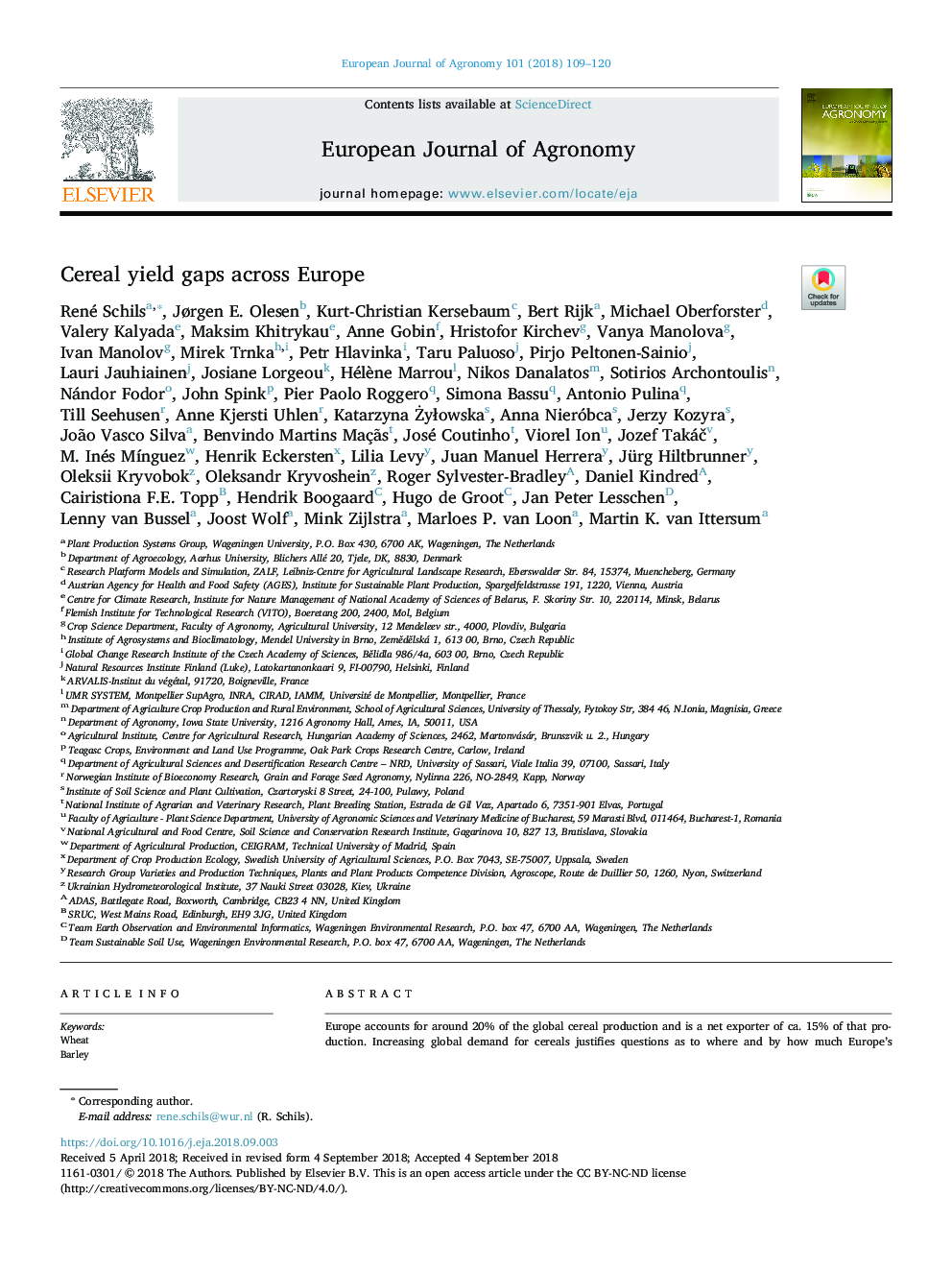| کد مقاله | کد نشریه | سال انتشار | مقاله انگلیسی | نسخه تمام متن |
|---|---|---|---|---|
| 10138739 | 1645900 | 2018 | 12 صفحه PDF | دانلود رایگان |
عنوان انگلیسی مقاله ISI
Cereal yield gaps across Europe
ترجمه فارسی عنوان
شکاف عملکرد غلات در سراسر اروپا
دانلود مقاله + سفارش ترجمه
دانلود مقاله ISI انگلیسی
رایگان برای ایرانیان
کلمات کلیدی
گندم، جو، ذرت دانه ای، مدل سازی محصول، پتانسیل تولید، نیتروژن،
موضوعات مرتبط
علوم زیستی و بیوفناوری
علوم کشاورزی و بیولوژیک
علوم زراعت و اصلاح نباتات
چکیده انگلیسی
Europe accounts for around 20% of the global cereal production and is a net exporter of ca. 15% of that production. Increasing global demand for cereals justifies questions as to where and by how much Europe's production can be increased to meet future global market demands, and how much additional nitrogen (N) crops would require. The latter is important as environmental concern and legislation are equally important as production aims in Europe. Here, we used a country-by-country, bottom-up approach to establish statistical estimates of actual grain yield, and compare these to modelled estimates of potential yields for either irrigated or rainfed conditions. In this way, we identified the yield gaps and the opportunities for increased cereal production for wheat, barley and maize, which represent 90% of the cereals grown in Europe. The combined mean annual yield gap of wheat, barley, maize was 239âMt, or 42% of the yield potential. The national yield gaps ranged between 10 and 70%, with small gaps in many north-western European countries, and large gaps in eastern and south-western Europe. Yield gaps for rainfed and irrigated maize were consistently lower than those of wheat and barley. If the yield gaps of maize, wheat and barley would be reduced from 42% to 20% of potential yields, this would increase annual cereal production by 128âMt (39%). Potential for higher cereal production exists predominantly in Eastern Europe, and half of Europe's potential increase is located in Ukraine, Romania and Poland. Unlocking the identified potential for production growth requires a substantial increase of the crop N uptake of 4.8âMt. Across Europe, the average N uptake gaps, to achieve 80% of the yield potential, were 87, 77 and 43âkg N haâ1 for wheat, barley and maize, respectively. Emphasis on increasing the N use efficiency is necessary to minimize the need for additional N inputs. Whether yield gap reduction is desirable and feasible is a matter of balancing Europe's role in global food security, farm economic objectives and environmental targets.
ناشر
Database: Elsevier - ScienceDirect (ساینس دایرکت)
Journal: European Journal of Agronomy - Volume 101, November 2018, Pages 109-120
Journal: European Journal of Agronomy - Volume 101, November 2018, Pages 109-120
نویسندگان
René Schils, Jørgen E. Olesen, Kurt-Christian Kersebaum, Bert Rijk, Michael Oberforster, Valery Kalyada, Maksim Khitrykau, Anne Gobin, Hristofor Kirchev, Vanya Manolova, Ivan Manolov, Mirek Trnka, Petr Hlavinka, Taru Palosuo, Pirjo Peltonen-Sainio,
